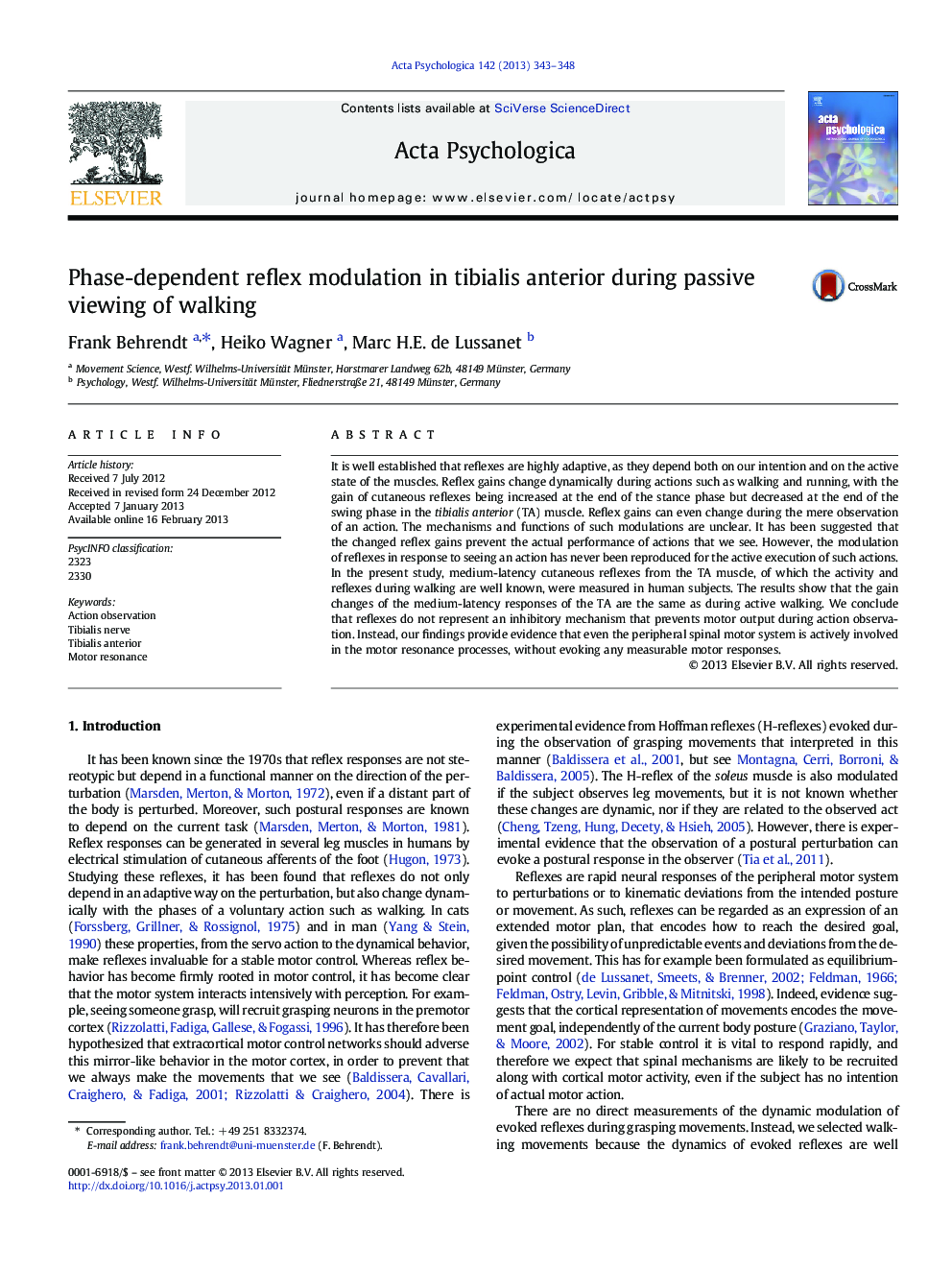| Article ID | Journal | Published Year | Pages | File Type |
|---|---|---|---|---|
| 919817 | Acta Psychologica | 2013 | 6 Pages |
It is well established that reflexes are highly adaptive, as they depend both on our intention and on the active state of the muscles. Reflex gains change dynamically during actions such as walking and running, with the gain of cutaneous reflexes being increased at the end of the stance phase but decreased at the end of the swing phase in the tibialis anterior (TA) muscle. Reflex gains can even change during the mere observation of an action. The mechanisms and functions of such modulations are unclear. It has been suggested that the changed reflex gains prevent the actual performance of actions that we see. However, the modulation of reflexes in response to seeing an action has never been reproduced for the active execution of such actions. In the present study, medium-latency cutaneous reflexes from the TA muscle, of which the activity and reflexes during walking are well known, were measured in human subjects. The results show that the gain changes of the medium-latency responses of the TA are the same as during active walking. We conclude that reflexes do not represent an inhibitory mechanism that prevents motor output during action observation. Instead, our findings provide evidence that even the peripheral spinal motor system is actively involved in the motor resonance processes, without evoking any measurable motor responses.
► We measured the gain of a cutaneous reflexes during passive observation of walking. ► The gain in m. tibialis anterior changes dynamically during observation of walking. ► This dynamic gain change is the same as during active walking. ► We conclude that spinal mechanisms can be part of motor resonance mechanisms.
